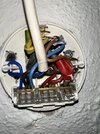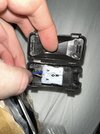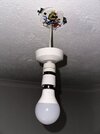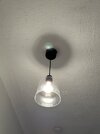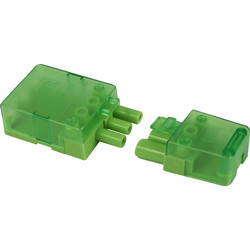Hi All,
DIYer here, no real knowledge as an electrician.
Was just trying to fit a new light in my landing and I am doing so on the rose that has a lot of wires coming from it.
Rather than taking the rose off and trying to wire up a new light with a junction box myself (as this would probably go wrong) I simply cut off the old light and wired the live and neutral into the new one. I then screwed the bracket under the old rose (still wired up as was) and secured the new fitting with everything inside.
Inside the fitting there is a lot of slack wire from the light as it is designed to be quite long if you want it to be and we didn't. So I am slightly concerned that all this is pressed up against the wires from the rose.
Hopefully the images attached show what I have done clearly.
Please can somebody let me know if this is passable as safe, if it isn't I will have to fork out for an electrician as I don't feel confident wiring up a new junction box myself.
Also, I have the old plastic cover for the previous rose, I could try and fit that in as well to protect the wires - if that would make a difference.
Thanks, Matt.
DIYer here, no real knowledge as an electrician.
Was just trying to fit a new light in my landing and I am doing so on the rose that has a lot of wires coming from it.
Rather than taking the rose off and trying to wire up a new light with a junction box myself (as this would probably go wrong) I simply cut off the old light and wired the live and neutral into the new one. I then screwed the bracket under the old rose (still wired up as was) and secured the new fitting with everything inside.
Inside the fitting there is a lot of slack wire from the light as it is designed to be quite long if you want it to be and we didn't. So I am slightly concerned that all this is pressed up against the wires from the rose.
Hopefully the images attached show what I have done clearly.
Please can somebody let me know if this is passable as safe, if it isn't I will have to fork out for an electrician as I don't feel confident wiring up a new junction box myself.
Also, I have the old plastic cover for the previous rose, I could try and fit that in as well to protect the wires - if that would make a difference.
Thanks, Matt.


